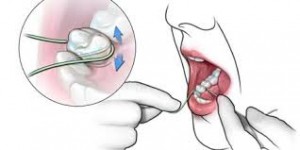We can think of sugar as white death, as sugar is responsible for heart attacks, strokes and even some cancers. Sugar is causing disability and mortality to a much higher degree than most people are aware of: a recent study pointed out that worldwide 184,000 deaths per year are attributable to sugar-sweetened beverage consumption; among those there are 133,000 deaths from diabetes, 45,000 deaths from cardiovascular disease and 6,450 deaths from cancers. Those people who developed disabilities from strokes, heart attacks, osteoporosis and severe arthritis measured 8.5 million disability-adjusted life years throughout the world and were related to sugar-sweetened beverages. 4.5% of these were from diabetes that was related to sugar-sweetened beverages.
These statistics are only regarding sugar-sweetened beverages! This does not take into account mortality from sugar in processed foods, in cookies, cakes and candies. It also does not take into account starchy foods like pasta, bread, bagels, white rice etc. that are all digested by amylase in the mouth and in the gut to turn into sugar within half an hour of ingesting them.
In the following I like to give an overview of what sugar does to our system.
History of sugar production
The initial production of refined sugar was developed in India as this review of the history of sugar shows.
In Great Britain the consumption of sugar was 4 pounds per person per year in 1700; it rose to 18 pounds per year in 1800, to 36 pounds per year by 1850 and over 100 pounds per year by the twentieth century. Similar figures are true for the US and in all developed countries. In 1747 the German chemist Andreas Marggraf identified sucrose in beet root. Since then technology was developed to extract sugar from the beet root, which was cheaper to do than extracting it from sugar cane. Both methods are in use today. In addition high-fructose corn syrup has been developed in 1970 and it replaces sugar in many uses, for instance in soft drinks and in processed foods.
Overall we are exposed to sugar in all disguises, such as sugar-sweetened beverages, candies, sweetened yogurt that is sold as “healthy”, power bars that are sugar laden and many more.
Effect of sugar on our bodies
1. Diabetes
As already pointed out above the average sugar consumption has increased from 4 pounds per person in 1700 to above 100 pounds per person in our time. Our poor pancreas has to cope with this additional burden of sugar and if it can’t, we get diabetes. The CDC says that in 2008 there were 8 cases of new type 2 diabetes cases per 1000 people in the US. The CDC projects that in 2050 this number will likely increase to 15 new cases of type 2 diabetes per 1000 people.
This shows you that the capacity of the human pancreas is limited. There is a breaking point regarding our insulin production. The insulin production has a limit, because the insulin producing cells in the pancreas can only produce a limited amount of this sugar-clearing hormone. When this point is reached the person is said to have developed diabetes. Diabetes causes heart attacks, strokes, kidney failure, blindness and circulation problems in the legs leading to amputations.
2. Cardiovascular disease
Diabetes is not the only problem that sugar causes. Our cardiovascular system is suffering because sugar makes the liver produce more LDL cholesterol that gets oxidized by sugar; the triglycerides are rising as well with continued sugar intake and with too much sugar intake there is excessive weight accumulation causing type 2 diabetes. This leads to more lipids in the arterial walls, called arteriosclerosis. The end results are heart attacks and strokes.
3. Cancer
It may not be obvious how sugar intake can lead to cancer. But sugar has been found to oxidize tissues and in the process produce dangerous free radicals. This causes chronic inflammation leading to mutations in the DNA of cells and weakening of the immune system. This will in time lead to cancer. Many cancer researchers have investigated this in detail in the last decades. I reviewed this in this blog, if you would like more information about it.
4. Brain atrophy and Alzheimer’s disease
Sugar overconsumption has been found to be one important factor in the development of Alzheimer’s disease, which is associated with the development of brain atrophy. Brain atrophy is just the mirror lesion in the brain that comes from hardening of the arteries. Brain atrophy develops when not enough nutrients and oxygen reach your brain cells. Part of the brain surface dies off and memory cells are lost. The end result is dementia or Alzheimer’s. Read more about this here.
5. Arthritis can come from sugar overconsumption
As I have summarized in this blog arthritis often is due to over consumption of processed foods including sugar products.
As I am explaining in this blog Dr. Hoffer has developed a simple supplementation for arthritis that will reverse the metabolic changes that are associated with arthritis. But you must switch to a Mediterranean diet without sugar and starchy foods, if you want to experience relief from your arthritis symptoms.
6. Low fat diet not helpful to reduce heart attack rates
As I pointed out before the low fat diet that was popular in the 1980’s until the early 2000’s did not help reducing heart attacks.
The low fat diet was laden with sugar, meaning that it was a low fat, high carb diet, and all of the problems I described above with weight gain, high LDL, high triglycerides and the development of diabetes caused more heart attacks and strokes. The real solution to preventing obesity and lowering heart attacks and strokes is to use a low carb/low to medium fat diet like the Mediterranean diet.
7. We need our muscles in older age
When we eat too many carbs from chocolate, candy, donuts and pasta there is not enough quality protein in our food to feed our muscles. If this is combined with a lack of exercise we are in double trouble of having flaccid muscles. This leads to falls and fractures, but is entirely preventable by eating a proper diet and exercising regularly.
8. ADHD can be fuelled by sugar
I have reviewed ADHD (attention deficit hyperactivity disorder) and mentioned that sugar and gluten sensitivity may be part of the problem. It is important to sort out nutritional factors by going through an elimination diet. Often our Western style diet (sugar and fat rich) is making things worse for the child with ADHD.
Apart from other measures avoiding sugar is very important for the ADHD patient.
9. Chronic inflammation
What causes chronic inflammation in the body and is responsible for both hardening of the arteries as well as arthritis? If you guessed sugar intake, you guessed right. I explained this in detail in this blog.
This concept is one of the biggest new things in the 21st century. The research goes back to the mid-nineties and culminated in the detection of an inflammatory marker, the C-reactive protein (CRP). The CRP level can now be used as a readily available blood test to detect inflammation in the body. Often this test will be positive in patients with arthritis, autoimmune diseases and cancer.
10. Obesity
Processed food contains wheat and sugar. The problem is that the high gliadin concentration in the Clearfield variety of wheat makes people addicted to food and sugar makes them gain weight. This is the cause of the obesity and diabetes wave. The remedy is to cut out all wheat and sugar as well as starchy foods. Switch to a Mediterranean diet without sugar and starchy foods.
11. Pimples and acne
Who would have thought that acne could come from a combination of sugar and milk products? Careful epidemiological studies have shown that in some regions of Africa, Brazil and Japan teenagers who eat the local food do not get acne, but when they switch to a Western style diet they come down with acne.
12. Tooth decay from too much sugar
Gum infections and severe tooth decay were found in the 1990’s to cause inflammation in the blood, which can be measured by using the C-reactive protein (CRP). Streptococcus viridans, a bacterium that populates gums and teeth can cause subacute endocarditis, a dangerous infectious disease of the heart valves, which can be responsible for sudden death in younger persons. There are other bacteria in the mouth that feed on sugar that we eat, particularly if we do not brush and floss our teeth regularly. This means there is double trouble: Sugar causes cavities and gum disease, but also causes heart attacks and heart valve infections.
Conclusion
Sugar and starchy food consumption affect so many organ systems that it is no wonder that people say that they feel better when they switch from the standard American diet to a Mediterranean type diet. We do not really want to buy a heart attack, a stroke, diabetes and Alzheimer’s disease when we go to the grocery store. But this is what you get in time when you buy the starchy foods and sugar containing processed foods that are in the center part of the grocery store.
The neighbor’s shopping cart
When I go shopping I always eye the groceries of my neighbor before or after me. Sometimes it is scary to look at the content of some of the shopping wagons. There is bread, potato chips, pretzels, chocolate bars, cookies, and the whole line-up that is really rich in sugar. Manufacturers mix sugar into healthy yoghurt, so it becomes unhealthy. Honey or maple syrup makes granola unhealthy. Jams contain 50% sugar, and on and on it goes. It is sobering to see how illness and disability is for sale, one shopping at a time. The reassuring truth is that you have choices!







